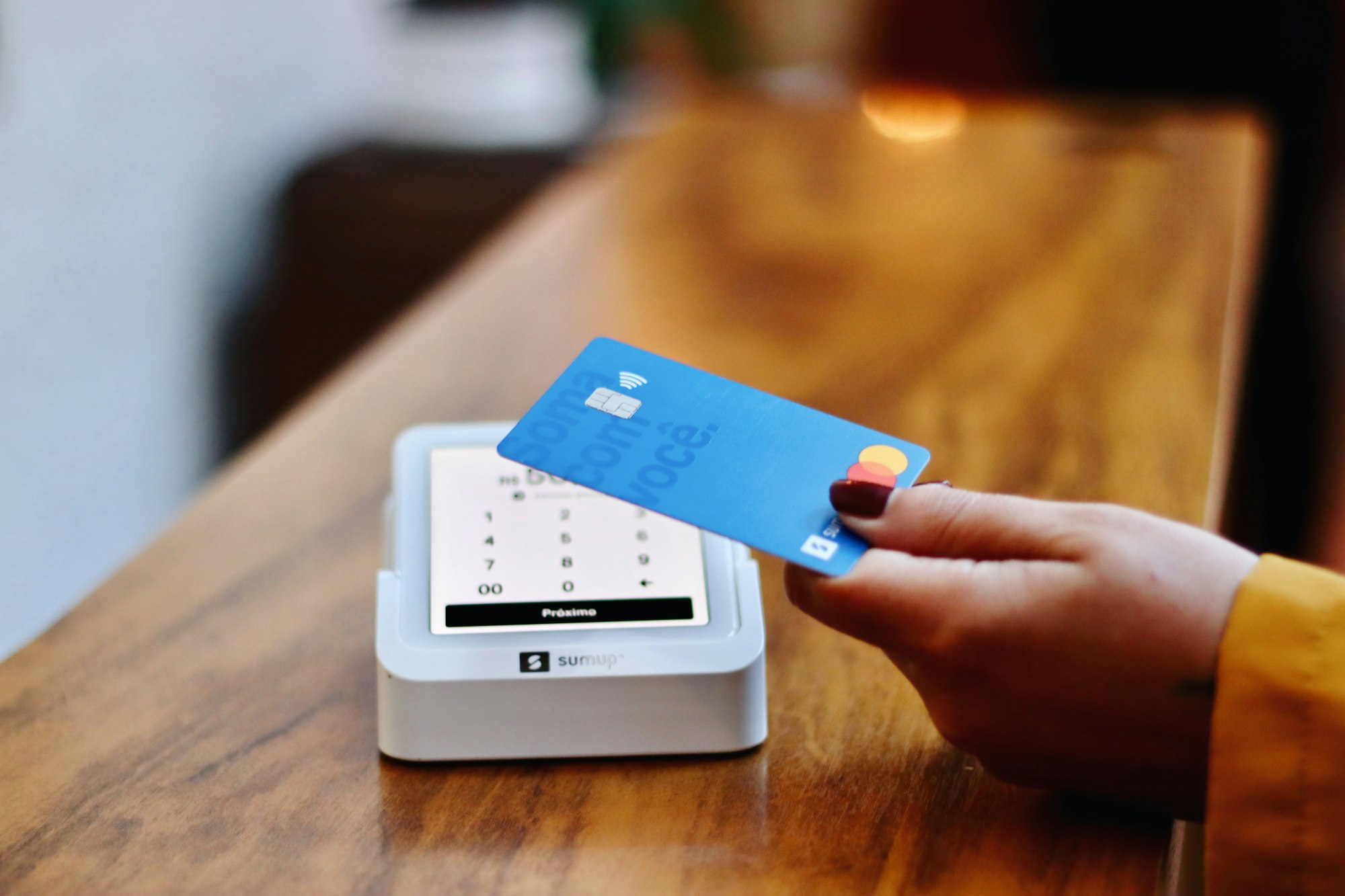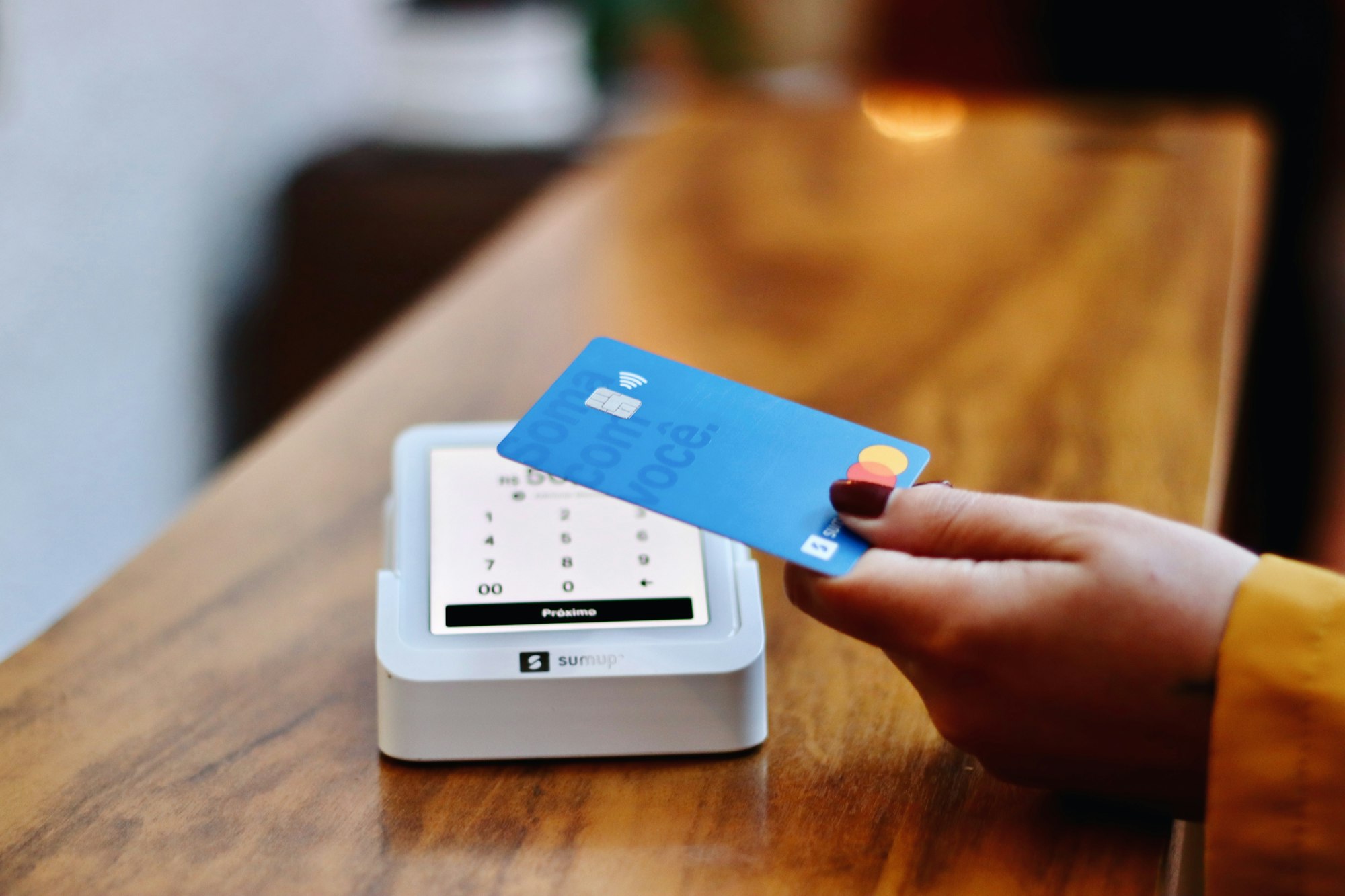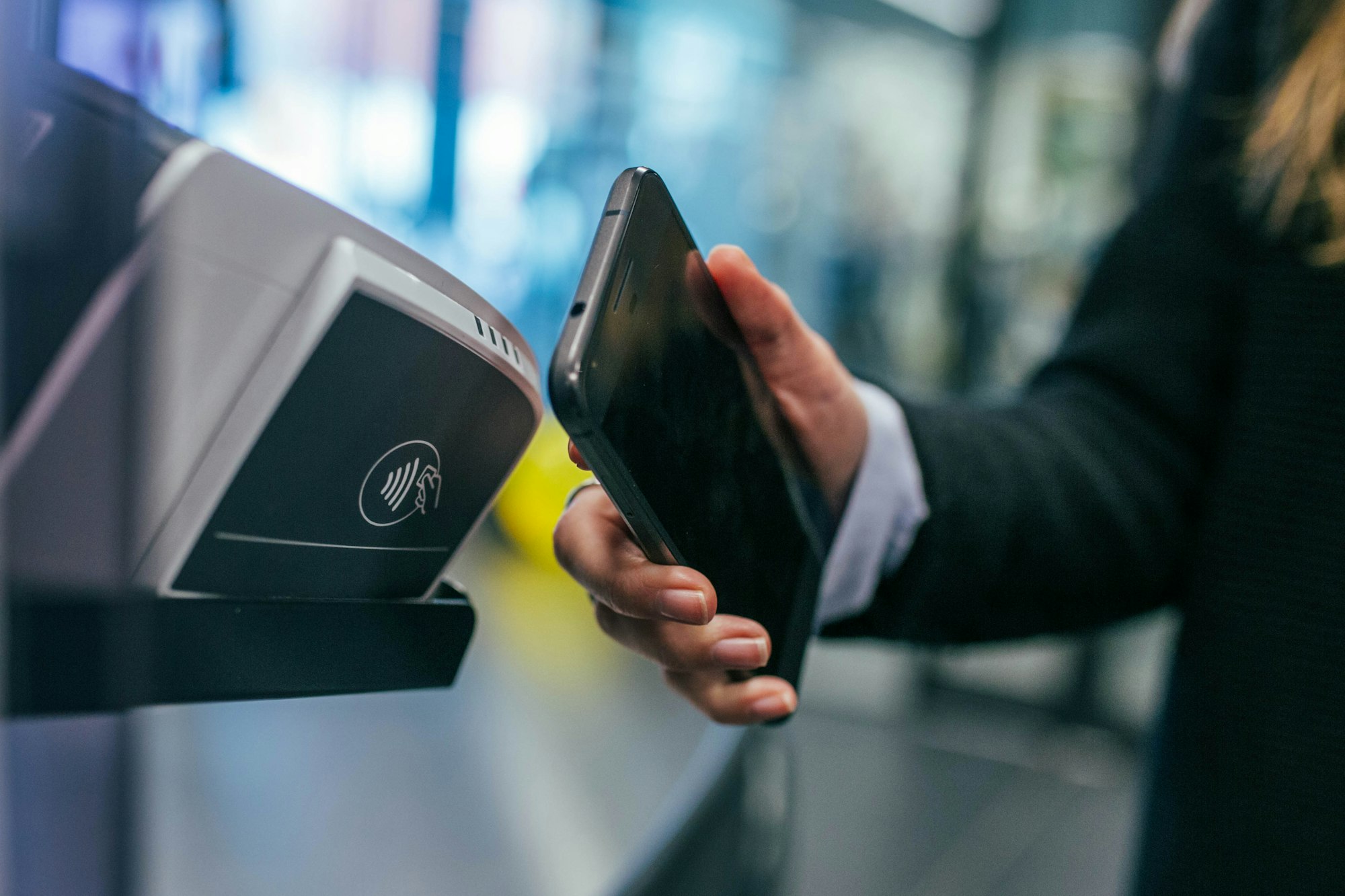A Deep Dive on the Global Payments Sector - Part 1: From Card Networks to Fintech Upstarts
The Global Payment Ecosystem: Visa and Mastercard mint margins as toll roads; fintechs add slick apps but face thinner take rates and fierce competition.

Every time a credit card is swiped in London or a mobile app is used to pay in Singapore, it taps into a sprawling global payment network. At its core, the payments sector connects consumers, merchants, banks, and technology providers to enable money to change hands instantly across the world. The scale is staggering – Visa’s network alone processed $15.7 trillion in payment volume last year, spanning 233.8 billion transactions. This ecosystem relies on a few key models: the card networks (like Visa, Mastercard, and American Express) that serve as the “rails” for transactions, and newer fintech platforms (like PayPal, Stripe, and Block’s Square/Cash App) that build innovative services on top of or alongside those rails.
In a typical card payment, a card network routes information between the bank that issued the consumer’s card and the merchant’s bank, authorizing and settling the transaction. Visa and Mastercard pioneered this open-loop network model – they don’t lend money or issue cards themselves, but instead act as toll operators for digital commerce worldwide. American Express, by contrast, runs a closed-loop network where it is often the card issuer, network operator, and processor all in one, letting it capture fees from both merchants and cardholders.
On the other side, fintech disruptors have introduced new ways to pay and get paid. Digital wallets and processors like PayPal ride on existing financial infrastructure (cards and bank accounts) to enable online payments with a few clicks. Developer-friendly payment gateways like Stripe provide easy integration for e-commerce sites to accept dozens of payment methods. And innovative point-of-sale systems like Square have brought digital payment capabilities to millions of small businesses that were once cash-only. In many cases, these upstarts partner with or piggyback on the card networks – for example, when you pay with PayPal, the funding may ultimately come from a Visa card – yet they also compete fiercely on user experience, merchant tools, and value-added services.
Crucially, payments is a two-sided market: success depends on attracting both the spenders and the receivers of money. This dynamic creates powerful network effects. The more consumers carry a certain card or use a particular wallet, the more merchants feel compelled to accept it; and the more merchants on the network, the more useful that payment option becomes to consumers. As we’ll see, this has led to entrenched positions for the incumbents – and formidable challenges for any newcomers seeking to unseat them.
Legacy Incumbents: The Card Networks
Visa and Mastercard have built what can only be described as a global duopoly in payment processing. By some estimates, these two networks control roughly 90% of card payment volume outside of China. Their rise began in the mid-20th century and, thanks to first-mover advantage and decades of relationship-building with banks and merchants, they remain the rails on which most of the world’s non-cash payments run. With a combined market capitalization around $850 billion, Visa and Mastercard are among the most valuable financial companies on Earth.
Visa and Mastercard operate a tollbooth model – every time you tap your card or enter your card number online, they collect a tiny fee (often a few cents plus a fraction of a percent of the transaction). Multiply that by trillions of dollars in annual transactions, and it adds up quickly. In fiscal 2023, Visa reported $32.7 billion in net revenue, while Mastercard reported $25.1 billion. Because they don’t take on credit risk (banks handle lending and assume fraud losses) and have relatively fixed operating costs (mainly network infrastructure and security), the card networks enjoy astonishing profitability. Visa’s operating margin is about 65–67%, and Mastercard isn’t far behind at ~57% – among the highest of any S&P 500 companies. These margins reflect the scalability of their business: once the network is in place, processing additional transactions is extremely cost-efficient, dropping straight to the bottom line.
More on how Card Networks Actually Work:

The bulk of Visa and Mastercard’s revenue comes from transaction fees charged to the banks on either side of a card purchase. A key component is the interchange fee (paid by merchants’ banks to card-issuing banks), which the networks set within regulatory limits; while interchange mostly passes through to the issuers of the cards, the networks levy their own assessment fees and transaction processing fees for using their networks. They also earn premium fees on cross-border transactions (a lucrative segment, especially when travel is robust) and have been growing revenue from value-added services like fraud prevention tools, data analytics, and consulting for merchants and banks. These ancillary services now account for roughly 25–30% of revenue for Visa, providing some diversification as the core payment business matures.
The Types of Network Fees
Service / assessment fees (volume-based): Charges tied to gross dollar volume on the network—domestic assessments to use the brands and rails, plus cross-border assessments when the cardholder’s bank and the merchant are in different countries. Mastercard explicitly breaks out domestic and cross-border assessments; Visa calls these “service revenues.”
Data processing / transaction fees (per-transaction): Fees for authorization, clearing and settlement messages—the real-time switching and back-office traffic. These scale with number of transactions rather than ticket size.
International transaction / FX fees: Extra network charges for cross-border and currency conversion activity; these are a major profit driver when travel and cross-border ecommerce are strong.
Value-added services: Revenues from fraud tools, tokenization, dispute services, data/analytics, consulting, and other network programs. (Examples include digital-enablement/tokenization fees.)
Beyond the big buckets, schemes also levy named program/assessment fees to acquirers/merchants, such as Visa’s Fixed Acquirer Network Fee (FANF) and Mastercard’s Network Access and Brand Usage (NABU), plus various cross-border and integrity fees. These flow to the networks, not to banks or processors.
In short, Visa/Mastercard monetize the right to use the network (volume-based assessments) and the use of the switch (per-transaction processing), with a growing layer of value-added services—and they rebate a slice via client incentives to keep the biggest players loyal.
The Moat
The card giants’ dominance rests on a classic network effect moat. With millions of merchants and billions of cardholders already transacting on their networks, any would-be competitor faces a Catch-22: it’s hard to get consumers without ubiquitous merchant acceptance, and hard to sign up merchants without a critical mass of consumers carrying your card. Over decades, Visa and Mastercard achieved a ubiquity that’s extremely hard to replicate – for a new network to emerge, it would need to persuade both merchants and banks to adopt it on a massive scale, a near-impossible feat unless a disruptive technology renders the old rails obsolete. Merchants may grumble about fees, but they have little choice but to accept Visa and Mastercard if they want to make sales; that gives the networks substantial pricing power and stickiness.
Another pillar of their moat is brand trust and security. Consumers worldwide recognize the Visa or Mastercard logo as a guarantee their payment will work almost anywhere, and that if something goes wrong (fraudulent charges, undelivered goods) they have recourse. The networks have invested heavily in fraud detection and cybersecurity, enhancing their resilience. Over the years, they’ve also navigated regulatory challenges – from antitrust lawsuits to caps on interchange fees – without ceding much ground. For example, even after the EU imposed interchange fee caps, card volumes continued to grow, and Visa/Mastercard compensated by raising other fees. In the U.S., rules like the Durbin Amendment opened debit card routing to competing networks, but Visa and Mastercard still handle the lion’s share of debit transactions. The duopoly’s global scale (accepted in over 200 countries) and deep integration with banking systems have made them relatively resilient to local challenges; when one door closes, another often opens in an emerging market where cash is being displaced by cards.
It’s telling that Visa and Mastercard boast return-on-equity figures north of 30%, reflecting their capital-light, fee-driven model. Perhaps the only market where they aren’t dominant is China, which built its own network (UnionPay). In most other regions, even newer payment methods often ultimately ride the Visa/Mastercard rails. One looming long-term threat is the rise of real-time bank transfer systems (like Europe’s SEPA Instant or India’s UPI) and mobile wallets that use bank-to-bank transfers, which bypass card networks. But Visa and Mastercard are hedging bets there too – both have acquired or invested in fintechs and real-time payment technologies to ensure they connect into those alternative rails as they develop. For now, the card giants remain firmly entrenched, their position protected by a wide moat of network acceptance and habit.
American Express
While often grouped with Visa and Mastercard, Amex plays a distinct game. Amex is both a network and a card issuer (and lends directly to cardholders), giving it an “end-to-end” grip on the transaction. Its brand has long been positioned around premium service and rewards, targeting an affluent clientele. This strategy creates a virtuous cycle: affluent card members spend more, which lets Amex charge merchants higher fees (a typical Amex merchant discount rate averages about 2.3% of the transaction – higher than Visa/Mastercard rates), which in turn funds generous card rewards and perks, attracting more high-spending customers. As CEO Stephen Squeri summed up, “when you look at our customers, 55% of our U.S. card customers make over $200,000 a year. Those are customers that our merchants want to connect to.”
Amex earns revenue from multiple streams in its closed-loop model. The largest is the discount fee charged to merchants for each transaction (Amex’s version of interchange+network fee). In 2023, Amex’s discount revenue was about $36 billion (on $1.5 trillion of cardholder spending), comprising nearly 60% of its total revenue. Amex also earns substantial interest income on balances carried by cardholders (it issues credit cards and charge cards that users sometimes revolve). Net interest accounted for roughly 20% of revenue. The remainder comes from cardholder fees (many Amex cards carry annual fees – these membership fees totaled ~$9.2 billion on a trailing basis, about 13% of revenue, along with travel-related commissions and other services.
Running a bank-like operation (with lending and rewards) means Amex has higher expenses than Visa/Mastercard, so its operating margins are much lower – around 19–20% in recent years. It sets aside reserves for credit losses and spends heavily on customer acquisition and lavish reward programs. Still, Amex’s integrated model creates a moat that’s different from, but in some ways as powerful as, the open-loop networks. Its brand cachet and customer loyalty are enormous – many Amex cardholders are remarkably sticky, staying for the perks (airport lounge access, points, concierge services) and status symbol. On the merchant side, Amex historically had an “acceptance gap” (some smaller merchants didn’t accept it due to fees), but it has largely closed that in the U.S., reaching 99% acceptance of places that take Visa/Mastercard by 2024 after efforts to slightly lower fees and sign up more merchants. In effect, Amex created a mini-network within the network: its cards are used by a desirable demographic, which gave it leverage to charge merchants more, yet that very desirability forced merchants to come on board or risk losing wealthy customers.
In sum, the legacy incumbents – Visa, Mastercard, and Amex – form the backbone of global electronic payments. They operate slightly different models but share common traits: strong network effects, high barriers to entry for competitors, trusted brands, and scale-based efficiency. These have translated into reliable growth and robust profits. But the story doesn’t end there, because a new generation of payment players has risen on the back of the internet and smartphones, bringing both collaboration and competition to the incumbents.
The Fintech Disruptors: PayPal, Stripe and Square
Over the past two decades, fintech disruptors have changed how businesses and consumers transact, often working in the gaps left by traditional payment systems. Three of the most influential are PayPal, Stripe, and Block, Inc. (formerly Square). Each has a distinct focus: PayPal pioneered online person-to-person and e-commerce payments; Stripe built a developer-friendly platform for internet businesses; and Block (Square) bridged the digital and physical worlds for small merchants and also created a consumer payments ecosystem via Cash App.
What these upstarts share is an emphasis on technology and user experience. They’ve grown by solving pain points the older networks or banks weren’t addressing – whether it was making payments easy for online auctions (PayPal’s early eBay days), simplifying complex payment integrations (Stripe’s APIs), or letting a food truck take credit cards with a smartphone (Square’s card reader). Let’s examine their business models, moats, and financial footing:
PayPal
With over 429 million active users worldwide as of mid-2024, PayPal is nearly synonymous with online payments. Born in 1999 and famously acquired by eBay in its early years, PayPal became the default way to pay online for millions who didn’t trust entering their card details on every website. Today it operates a two-sided network connecting consumers and merchants in more than 200 markets. PayPal’s users can store funding sources (bank accounts, cards, or balances) in a digital wallet and pay at checkout with a simple login, while merchants from small webshops to giants like Netflix use PayPal as a payment option. The company also owns Venmo (a hugely popular U.S. peer-to-peer payment app with a social twist), Braintree (a gateway that processes payments for other apps and sites), and other services like Xoom (international remittances).
PayPal primarily makes money by charging transaction fees to merchants. When a consumer pays $100 via PayPal, the merchant might receive around $97–$98, with the rest split between PayPal and any underlying card network fees. In essence, PayPal layers itself on top of the banking/card system and takes a cut for adding convenience and security. Its take rate (revenue as a percentage of total payment volume) is a few percent on average, higher for some services (international transfers or credit transactions) and lower for others. In 2024, PayPal’s total payment volume was roughly $1.36 trillion (up 9% year-over-year), from which it generated $31.8 billion in revenue. That revenue has been growing, but at a more modest clip in recent years (single-digit percentages) as competitive pressures and a shift to lower-margin segments (like bigger enterprise clients via Braintree) weigh on its take rate.
PayPal’s profits come from achieving scale: its operating margin in 2024 was about 17% (GAAP), which is healthy though far below the card networks’ margins. Costs include payment processing expenses (fees it must pay to banks and card networks when users fund via cards), customer support, fraud losses, and heavy investments in technology and compliance. In recent quarters, under pressure from investors, PayPal has been aiming to expand margins by cutting costs and focusing on more profitable transactions. It’s a delicate balance, because squeezing merchants too hard or reducing user incentives could send customers to alternatives.
PayPal’s economic moat has traditionally been its network effect and brand in online payments. So many consumers have PayPal accounts, and so many merchants offer it, that it’s often the path of least resistance for both sides. A shopper encountering an unfamiliar website may prefer the “Pay with PayPal” button over typing in credit card details, knowing they won’t have to expose their card number and that PayPal offers buyer protection. This trust and convenience give PayPal a form of stickiness – users stay because their payment info is stored and widely accepted, and merchants see higher conversion rates at checkout when they offer PayPal. The network of 430+ million users itself is a huge asset that any rival would envy, acting as a barrier to entry.
However, some argue PayPal’s moat has narrowed in recent years. Why? Alternatives have proliferated: card networks rolled out one-click payment options (Visa Checkout, Mastercard Masterpass – though these had mixed success), tech companies introduced digital wallets like Apple Pay and Google Pay that are extremely easy on mobile devices, and e-commerce platforms like Amazon simply built their own payment systems. Moreover, PayPal’s user growth has plateaued (active accounts actually dipped from 435 million to 426 million in 2023 as the company pruned inactive accounts). In the competitive tech landscape, some observers feel PayPal hasn’t innovated as rapidly lately – its checkout experience hasn’t changed drastically in years – while rivals are catching up. That said, PayPal is hardly standing still: it’s pushing into in-store payments (enabling PayPal or Venmo QR code payments at point-of-sale), expanding its “buy now, pay later” offerings, and looking to leverage Venmo’s strong brand among younger users (e.g. allowing Amazon and other retailers to accept Venmo).
Stripe
While PayPal built a consumer-facing brand, Stripe is the quintessential behind-the-scenes fintech giant. Thousands of companies from startups to Fortune 500 firms use Stripe’s software to power payments in their apps and websites. If you’ve booked an Airbnb, ordered groceries on Instacart, or subscribed to a Zoom plan, you’ve likely paid through Stripe’s platform without even realizing it. Founded in 2010, Stripe focused on making it dead-simple for developers to integrate payments – a few lines of code could set up a secure checkout, something that used to require a merchant account and weeks of bank negotiations. That developer-centric ethos fueled Stripe’s rise as the go-to solution for the exploding world of online services and e-commerce. Today Stripe operates in 40+ countries and supports 135+ currencies and dozens of payment methods, from credit cards to Alipay to real-time bank debits.
Stripe makes money by charging fees per transaction, much like PayPal, but its role is slightly different. It acts as a payment gateway, processor, and intermediary. For a typical credit card transaction, Stripe might charge the merchant ~2.9% + 30¢, out of which it pays the requisite interchange to the card networks/banks, and keeps a share for itself (the exact cut can vary, but on a $100 payment via Visa, Stripe’s net revenue might be in the ballpark of $0.50 to $1 after paying other parties). At massive scale, those fractions add up: Stripe’s estimated gross revenue was around $14.4 billion in 2022, with a net revenue (what Stripe actually retained) of about $3.1 billion after payouts. The distinction between gross and net is important – Stripe passes through most of the interchange to others, so its net revenue is a better measure of its take. By 2024, Stripe’s net revenue was estimated at $5.1 billion, on over $1 trillion in total payment volume processed that year. This implies Stripe’s overall take rate is quite low (around 0.5%), reflecting its strategy of being the plumbing for payments at scale.
Beyond basic processing, Stripe has expanded into a suite of add-on products: Stripe Radar for fraud detection, Stripe Billing for subscription management, Stripe Issuing to help companies create their own credit cards, and more. These not only add revenue streams (some are SaaS-like models), but also make Stripe stickier for clients who adopt them. Stripe’s goal is often described as building an “economic infrastructure for the internet.” In practice, that means if a business uses Stripe, they can handle payments, recurring charges, marketplace payouts, tax calculation, etc., all in one integrated system, rather than piecing together multiple vendors.
Stripe’s competitive moat is somewhat different from the consumer-facing networks. It relies on a combination of technology leadership, scale, and ecosystem integration. One could argue Stripe has a developer network effect: the more developers familiar with and loyal to Stripe, the more likely new startups are to choose Stripe as their payment platform, which in turn means experienced Stripe developers remain in demand. Its early focus on ease-of-integration gave it a strong reputation; even as competitors like Adyen or Braintree (PayPal’s unit) offer similar capabilities, Stripe is often the first name that comes to a tech founder’s mind for payments. This is a softer network effect than a two-sided consumer/merchant network, but it has created a community and mindshare moat.
Another aspect of Stripe’s moat is scale and reliability. Handling payments is complex and failure-prone – dealing with thousands of banks, different payment methods, compliance in different countries, etc. Stripe’s vast volume (1%+ of global GDP flows through it now) provides economies of scale: it can invest in custom integrations with banks, better fraud algorithms (benefiting from data across millions of transactions), and negotiate volume discounts with financial partners. A new entrant would find it hard to match Stripe’s breadth of features and global reach without years of effort. For large enterprise clients, Stripe competes with Adyen (a Dutch processor) and legacy processors like Fiserv/First Data or Worldpay; for smaller businesses, it competes with PayPal’s Braintree or Square’s online offerings. But Stripe’s strategy of moving upmarket (winning larger clients like Amazon and Shopify, which it has) while not alienating startups has kept its growth momentum strong.
Block (Square)
Block is a unique case of a disruptor that started in the physical world of payments and then expanded into digital. It began in 2009 with the Square Reader, a small white dongle that let anyone plug into a smartphone and swipe credit cards. This was revolutionary for micro-businesses and sole proprietors – think market vendors, food trucks, musicians selling merch – who previously couldn’t accept cards easily. Square dramatically democratized merchant acquiring, using technology to underwrite risk quickly and offering simple, flat pricing (no haggling over interchange-plus details). Over time, the company (renamed Block in 2021 to reflect a broader portfolio) has grown into an ecosystem of interconnected businesses:
- Square: The original merchant payments system, which now includes full point-of-sale (POS) software, online store integration, inventory and employee management, and even small business banking services. As of 2023, Square had over 4 million active merchant sellers, ranging from tiny sole proprietors to larger retailers – though its sweet spot remains small and mid-sized businesses. Square charges merchants roughly 2.6% + 10¢ for tapped or swiped card transactions (slightly higher for online or keyed-in payments), out of which it pays interchange to the card networks and keeps a margin.
- Cash App: A popular peer-to-peer payment app (rival to Venmo) that Block launched in 2013. Cash App allows individuals to instantly send money to each other, spend via a linked Cash Card (a Visa debit card), invest in stocks, and even buy Bitcoin. It has become a cornerstone of Block’s consumer strategy, especially among younger and underbanked users. By 2024, Cash App had 57 million monthly active users and a strong presence in the U.S. P2P payments space. While basic money transfers are free, Cash App monetizes through optional features: a 1.5% fee for instant bank transfers, interchange revenue when users spend with the Cash Card, spreads on Bitcoin sales, and fees for tax and investing services.
- Afterpay: A “Buy Now, Pay Later” installment payments firm Block acquired in 2022, which is integrated with Square and Cash App to offer consumers split payments at participating merchants.
- Other initiatives: Block also includes Tidal (a music streaming service), TBD (focused on Bitcoin and decentralized finance infrastructure), and an emerging Bitcoin mining hardware business – though these are relatively small and not core to the payments story.
The Square segment generates revenue from merchant transaction fees and sales of hardware (card readers, terminals). Hardware is sold nearly at cost (a strategy to onboard merchants), while transaction fees contribute the bulk of Square’s gross profit. Square’s take rate per transaction is low (it keeps maybe 0.5–1% of the payment volume after paying interchange), but it makes it up in volume and by cross-selling services like payroll or loyalty programs for a subscription fee. The Cash App segment makes money from those instant withdrawal fees, interchange on the Cash Card (it gets a cut of merchant fees when people use the card), Bitcoin trading spread, and optional services.
Block’s moat comes from building a sticky ecosystem, especially for small businesses and individuals who have been under-served by traditional financial services. For a merchant, using Square is more than a payments solution – it can become the operating system of their business. A merchant might use Square for in-person sales, online e-commerce, inventory tracking, payroll, financing (Square Capital offers cash advances), and more. This integration across functions creates switching costs: moving to a competitor would mean replacing multiple systems at once. Square’s brand loyalty among merchants is strong; it earned trust by simplifying something (accepting cards) that used to be cumbersome. Even as banks and others have their own small-business offerings, Square’s head start and user-friendly design give it an edge with the modern entrepreneur.
Cash App, meanwhile, has a moat in its network of users (especially in demographics like younger consumers and those without full bank access). Much like PayPal/Venmo, it benefits from a P2P network effect – you use the payment app that your friends use. Cash App has cleverly expanded from simple peer payments to acting as a quasi-bank account (users can direct deposit paychecks into it), a brokerage (for stocks and Bitcoin), and a commerce tool (users can get discounts via “Cash App Boosts” when using their Cash Card at certain merchants). This multi-functional approach increases user engagement and lock-in: for many, Cash App is not just a payment tool but part of their financial life.
One interesting dynamic is that Block is attempting to create a closed-loop of its own: it has millions of merchants on Square and tens of millions of consumers on Cash App – if it can vertically integrate those, it could bypass traditional networks for certain transactions. For example, Block introduced “Cash App Pay” allowing Cash App users to pay Square merchants by scanning a QR code, linking the two ecosystems internally. This kind of direct connection (no Visa or bank in between) could save fees and deepen loyalty on both sides. It’s early days for that initiative, but it showcases Block’s ambition to leverage its dual-sided scale.
Competitive Moats and the Road Ahead
Stepping back, the global payment services sector sits at the intersection of finance and technology, and its competitive dynamics reflect elements of both. Network effects, once established, tend to be extremely durable – this is why the Visa/Mastercard duopoly has held firm for decades. Yet technology can shift paradigms: consider how smartphones birthed mobile wallets, or how APIs enabled any app to become a “payments app” with a few lines of code (Stripe’s contribution). The incumbents possess towering advantages in network scale and trust, but the disruptors often move faster and innovate on customer experience.
One core theme is “coopetition” – cooperation and competition in tandem. PayPal and Stripe rely on Visa and Mastercard’s infrastructure to function (when a PayPal user links a debit card, or when Stripe processes a credit card, the transaction ultimately runs on Visa/MC rails). In that sense, the fintechs have been great for the networks, driving more volume onto cards. Visa and Mastercard earn fees on many PayPal/Stripe/Square transactions, even if those firms are also competing for a share of the fees. It’s telling that when PayPal and Visa were at odds some years ago (PayPal was steering users to link bank accounts instead of cards to avoid interchange fees), they eventually struck a strategic partnership – recognizing a degree of symbiosis. Likewise, Apple Pay and Google Pay haven’t disintermediated the networks; they’ve just given consumers a new front-end, while the cards underneath remain Visa or Mastercard.
However, the competitive fault lines are still present and evolving:
- Closing the Loop: Both legacy and fintech players see advantage in vertical integration. Amex proved the value of a closed loop in one model. Now Apple is doing something similar with Apple Card + Apple Pay (it has its own card issuing partnership and keeps tight control of the user experience), and Block is trying with Cash App and Square. Even Visa has experimented with offering more directly to merchants (through value-added services) and consumers (with fintech partnerships) to not be just a back-end rail. The more any player controls both ends of a transaction, the more economics they can keep and the more data they have to reinforce their moat.
- Regulation as Wildcard: The sector’s resilience owes a lot to navigation of regulatory waters, but storms brew occasionally. In the EU and UK, authorities are probing card fees again, and exploring opening up account-to-account payment options that could bypass cards for things like online shopping or recurring bills. In the U.S., the CFPB has looked at the “closed” nature of mobile wallets (e.g., Apple Pay only working on iPhones) and at fees in the payments ecosystem. Meanwhile, data privacy laws could impact how payment companies leverage customer data, and strict KYC/AML rules add compliance burden (recently, PayPal was fined $25 million by the CFPB for mishandling some consumer agreements, and Block had to deal with fraud concerns on Cash App). Generally, the big players have the resources to comply and adapt – in fact, regulation can even reinforce moats by raising barriers to entry (a tiny startup can’t easily manage global licensing and compliance, but Visa/MC/PayPal can). Still, any regulatory moves to cap fees or push alternative networks could alter the landscape. Real-time payments networks (like the new FedNow in the U.S.) are an example: if they gain traction for retail payments, they could cut into card volumes long-term. Visa and Mastercard are responding by integrating those systems into their offerings rather than fighting them.
- Innovation and Expansion: Growth for these firms will come from both penetrating new markets (geographies and customer segments) and inventing new services. Many emerging markets still have payments up for grabs – for instance, Africa and parts of Southeast Asia rely on mobile money systems (M-Pesa, etc.) and cash, leaving room for card and fintech expansion. Visa and Mastercard are investing in Africa and partnering with mobile money providers to ensure they aren’t left out. PayPal is eyeing opportunities in the “digital wallet” space beyond payments (like savings or investing features). Stripe is expanding into business banking services (offering things like capital loans or expense management for its business users). And Block is a big proponent of cryptocurrency’s future in payments, with its CEO Jack Dorsey even renaming the company to reflect “blockchain” – though crypto payments at scale remain more vision than reality today.
From an investment perspective, analyzing these companies often comes down to moat durability, growth runway, and valuation. Visa and Mastercard are the “wide moat, long runway” businesses – strong competitive advantages and benefiting from the secular trend of cash-to-card conversion globally, albeit at already high valuations. PayPal has a solid network effect moat, but the question is whether it’s eroding at the edges; its valuation has moderated, perhaps making it a value play if one believes its moat will hold. Block is more of an emerging moat – it doesn’t have the near-monopoly of an incumbent, but it has an ecosystem that could become highly defensible if it continues to grow its user bases on both sides. Stripe, being private, is the wildcard: it likely has a wide moat in online payments infrastructure, but until it’s public, investors can only guess at its true financial profile and what price is “right” to pay for its growth.
Bottom Line
The global payments sector is a huge and growing pie with room for both the stalwarts and the insurgents. Legacy players like Visa and Mastercard have proven to be extraordinarily resilient – they are effectively the “rails” of digital commerce, with tollbooth businesses that churn out cash and boast some of the stickiest competitive advantages in any industry. Newer fintech entrants have succeeded not by displacing those rails, but by building superior user experiences and services on top of them, or by reaching customers the old system ignored. Going forward, the competitive battles will likely intensify at the margins – over who owns the customer interface, who sets the standards for new payment types, and who can expand their network effect without running afoul of regulators or anti-competition concerns.
For investors and industry watchers, this is a sector where both stability and disruption coexist. But margins and market share will accrue disproportionately to those with the strongest moats (global networks, or deeply embedded ecosystems). As of 2025, the payment giants continue to enjoy fortress-like positions, while the upstarts have carved out valuable niches and even behemoth status of their own (PayPal’s user base rivals a nation in size; Stripe quietly handles a sizeable fraction of internet commerce). It’s a space where scale begets scale, and network effects can snowball into dominance – and right now, the incumbents and disruptors alike are racing to make their networks bigger, their services stickier, and their moats deeper in the ever-evolving quest for a swipe, tap, or click of that next payment.
A Deep Dive on the Global Payments Sector - Part 2: How Card Networks Actually Work

A Deep Dive on the Global Payments Sector - Part 3: The Payment Processors

Author

Investment manager, forged by many market cycles. Learned a lasting lesson: real wealth comes from owning businesses with enduring competitive advantages. At Qmoat.com I share my ideas.






